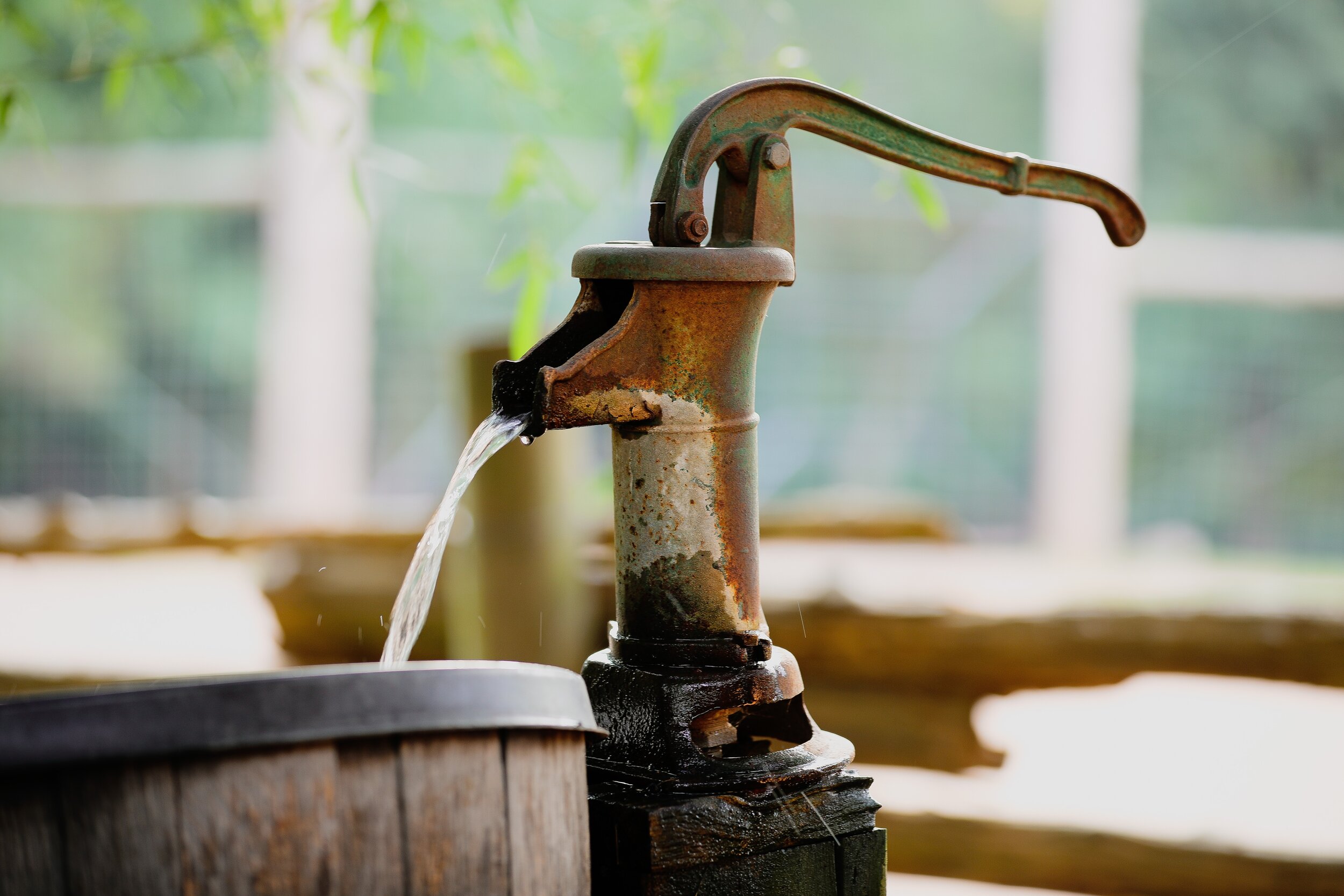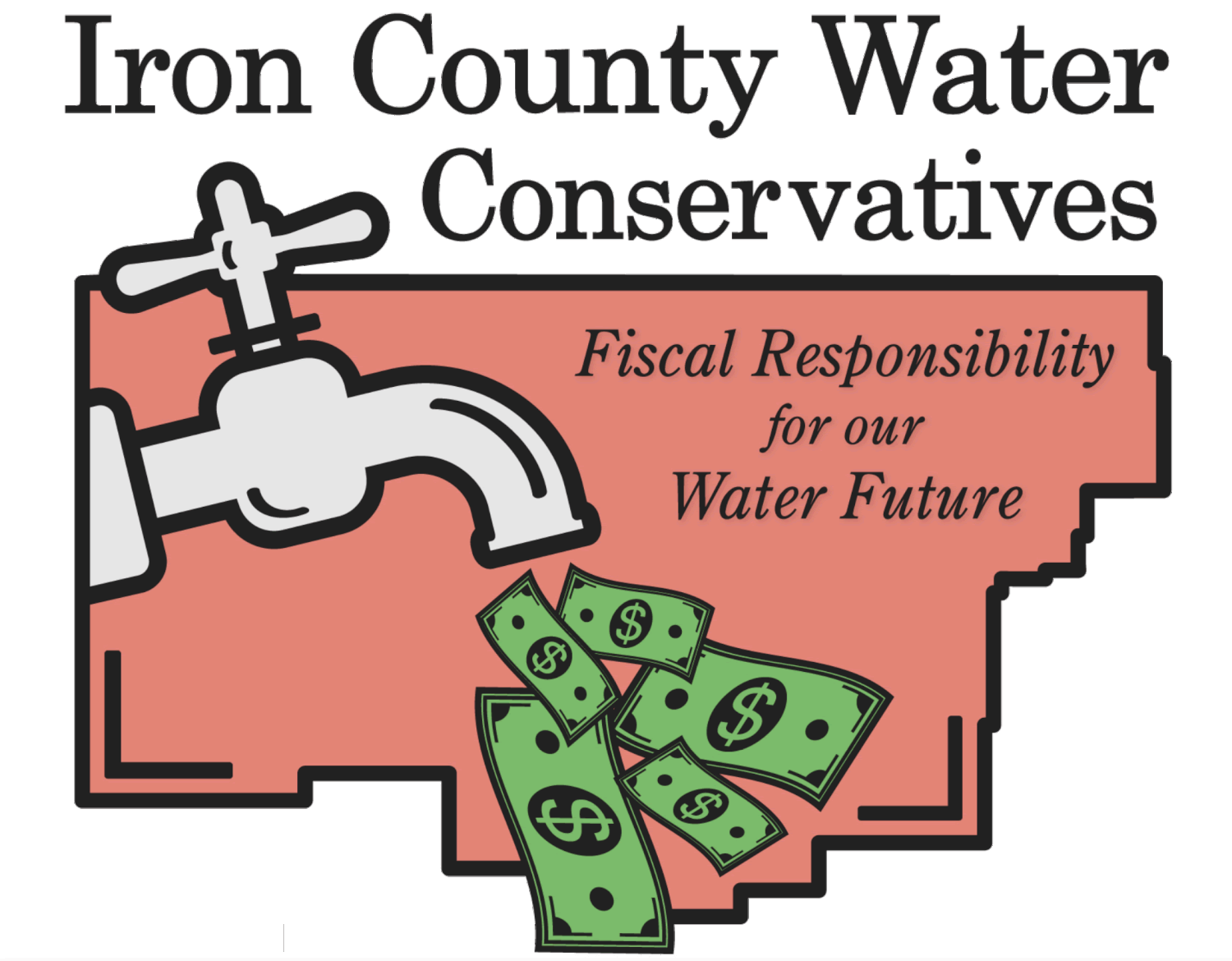
Wasteful Aquifer Mining
Water District Embarks on Fool’s Errand, Proposes Mining one Aquifer after Another
For generations, the Cedar Valley aquifer has provided water to Iron County for a variety of uses. But more recently, water managers failed to take steps to sustainably manage water demand by encouraging users to waste water thereby over-pumping or mining local aquifers.
The Central Iron County Water District (CICWD) failed tax policy of over-collecting property taxes to lower the price of water is hastening this unsustainable water use and water is being pumped out of the aquifer faster than it can be replenished. This mining of the Cedar Valley aquifer has not been corrected and the CICWD now wants to extend its failure by mining aquifers in neighboring Beaver County with the $260 million Pine Valley Project.
This proposed project is a fool’s errand. CICWD has mined one aquifer and is now proposing to mine another aquifer because they refuse to embrace free market economics and instead want to continue collecting a mountain of property taxes from local residents and businesses. The solution to a problem should not be a repeat of the same problem. The proposed Pine Valley Project raises major concerns about whether CICWD can be trusted to manage the water supply for Iron County residents and businesses.
Past & Current Mismanagement: Mining the Cedar Valley aquifer.
CICWD’s mining of the Cedar Valley aquifer has been going on for three decades. As the water in the aquifer is mined for CICWD’s wasteful water use, natural rainfall cannot recharge the aquifer as it has done for thousands of years. This has caused the ground to gradually sink in Cedar Valley, inflicting damage on would-be subdivision’s and putting future development at risk.1
According to the Utah Division of Water Rights, the Cedar Valley basin has 6.8 billion gallons of water available per year. But CICWD currently pumps 9.1 billion gallons of water per year. As seen in the graphic below, that’s 2.3 billion gallons of water per year more than the aquifer can replenish.2 This over-pumping of the aquifer by CICWD is threatening the water supply for Iron County residents and for future generations.
The Central Iron County Water District is over-pumping the Cedar Valley aquifer by 2.3 billion gallons of water per year. The water district’s poor leadership has mismanaged the water supply, threatening future generations of Iron County residents.
Future Mismanagement: Mining the Pine Valley aquifer, a fool’s errand.
The Pine Valley Project would use 15 groundwater wells to mine water from Beaver County and pipe it 66 miles across the desert to Cedar City. The project would first mine water in Pine Valley and then in Wah Wah Valley. But USGS data shows the project will suck dry the water supplies in both valleys as well as Beryl-Enterprise, Snake, Sevier, Tule and other valleys.
Central Iron County Water District’s Proposed Pine Valley Project
The Central Iron County Water District has over-pumped the Cedar Valley aquifer for decades, depleting their water supply. Now the water district is looking to do the same in neighboring Beaver County. The $260 million Pine Valley Project will use 15 groundwater wells to mine ancient groundwater aquifers in the desert and send the water 66 miles to Cedar City.
The impacts from the Pine Valley Project on multiple aquifers would likely span six counties between Nevada and Utah.3 Ancient aquifers that have had a stable supply of water for thousands of years would be at risk of facing the same fate as the Cedar Valley aquifer, at the hands of CICWD.
The Pine and Wah Wah Valleys have an estimated combined safe yield of 3.5 – 4.5 billion gallons of water annually, according to the USGS.4 But the Pine Valley Project allows for CICWD to pump a combined 8.5 billion gallons of water annually from both Pine and Wah Wah Valleys.5 That’s a surplus of between 4 – 5 billion gallons of water CICWD intends to mine, as seen in the graphic below, as history looks to repeat itself.
The Pine Valley Project, proposed by the Iron County Water District, would mine water from groundwater aquifers in Beaver County, repeating the damage the water district has already inflicted on the Cedar Valley aquifer. This would severely damage these ancient aquifers, causing irreparable damage to the water supply for current and future residents.
Despite the USGS data, CICWD claims they will monitor water levels to ensure they don’t over-pump the aquifers in Pine and Wah Wah Valley’s as they have already done to their own Cedar Valley aquifer. Yet CICWD acknowledged that it “can sometimes take 20 - 30 years of pumping” before the impacts of groundwater mining become visible.6 Based on USGS data and CICWD’s history of failed aquifer mining, the Pine Valley Project looks to be another CICWD tax and spend folly laid on the shoulders of Iron County residents.
The proposed Pine Valley Project timeline.
The Bureau of Land Management (BLM), the federal agency charged with permitting the Pine Valley Project for CICWD, released their draft Environmental Impact Statement (EIS). The draft EIS must include viable alternatives to the Pine Valley Project, while assessing all impacts from the project. During this time, the public is encouraged to provide comments on the Pine Valley Project to the BLM. A final EIS will then be prepared by the BLM before a Record of Decision is made and approval given or denied.
Now is the time to make your voice heard. It’s our chance to hold CICWD accountable for continuing their past mistakes of mining central Utah’s aquifers through a wasteful tax policy. Join the Iron County Water Conservatives and urge the BLM to halt the wasteful Pine Valley Project.
Citations
- Division of Water Rights. Draft Cedar City Valley Groundwater Management Plan. (2020). https://www.waterrights.utah.gov/groundwater/ManagementReports/CedarValley/Cedar%20City%20Valley%20Draft%20GWMP%2020201103.pdf
- Central Iron County Water District. Pine Valley Water Supply and Conservation Project. (2021). https://cicwcd.org/west-desert-water-development-project/
- Brooks, L.E., 2017, Groundwater model of the Great Basin carbonate and alluvial aquifer system version 3.0: Incorporating revisions in southwestern Utah and east central Nevada: U.S. Geological Survey Scientific Investigations Report 2017–5072, 77 p., 2 appendixes, https://doi.org/10.3133/sir20175072.
- Gardner, P.M., Marston, T.M., Buto, S.G., and Brooks, L.E. (2020) Hydrogeologic and geochemical characterization of groundwater resources in Pine and Wah Wah Valleys, Iron, Beaver, and Millard Counties, Utah: U.S. Geological Survey Scientific Investigations Report 2019–5139. Pg 49. https://doi.org/10.3133/sir20195139.
- Utah State Engineer. Settlement Agreement. (2019). https://www.waterrights.utah.gov/docImport/0614/06145930.pdf.
- Joan Meiners. St. George Spectrum & Daily News. The Water Tap: Breaking down the Uncertainty and the Science behind the Pine Valley Water Supply project. (August 21, 2020). https://www.thespectrum.com/story/news/2020/08/21/water-tap-breaking-down-pine-valley-water-supply-project/5614483002/



